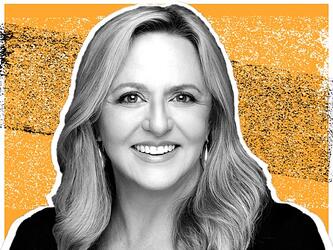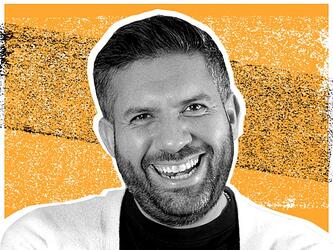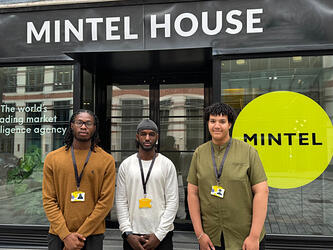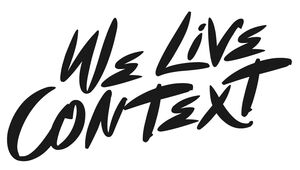Through the AI looking glass: How trust is moving

Not so long ago, if you wanted to know something, you asked Google. It gave you a list of links; a neat, ranked pile of possibilities. You still had to click around, read, compare, decide what felt credible. The trust was in the process – Google’s job was to point you to the right streets, not walk you to the door.
Now, that’s changing.
When you ask ChatGPT or Claude a question, you don’t get a pile of pamphlets – you get a tour guide. One voice, speaking directly to you, already having done the walking and having decided what’s worth seeing. Already stitching the story together for you.
It’s a subtle but important shift in how we place our trust, like moving from flipping through a guidebook to letting someone else plan the itinerary.
The shift in where trust forms
We used to trust search engines to surface good answers. Now, we’re starting to trust AI to be the answer. That’s a different kind of relationship.
When a system saves us time, and when the answers feel ‘good enough’ (or better yet, ‘exactly what I needed’) we’re inclined to return to it. Trust builds in these small reinforcements, like adding pebbles to a jar. Over time, the jar gets heavy enough to tip the scales in its favour.
For many, that means the decision-making process is collapsing into a single step: ask the AI. Act on the answer.
Why brands should care
If a growing share of consumer decisions are being made through this AI lens, other sources of influence (ads, articles, paid search) inevitably lose some of their punch.
Your brilliant pay-per-click (PPC) campaign may never get seen if the consumer’s buying journey begins and ends in an AI chat window.
Take skincare as an example. In a recent Ad Age piece, Cetaphil shared that 40-50% of Gen Z shoppers are already using AI tools in-store, phone in hand, asking ChatGPT which product to buy. The brand is adapting its marketing in response: rewriting product descriptions to make them more AI-visible, prioritising clinical credibility and keyword strategy, and actively researching how AI describes their brand.
This isn’t just happening online. It’s happening in the aisle – right between the moisturiser and the cleanser.
A double opportunity for market research
From a research perspective, there are two big questions worth getting curious about:
- Shaping the inputs: How is GenAI ‘learning’ about your brand? What content, keywords, and narratives is it absorbing? How can you influence that upstream data so that your best story is the one the AI tells?
- Understanding the outputs: How does the AI actually portray you? If you ask about your category, your competitors, your product, what comes back? Does it match the positioning you want? This is brand and category tracking for the AI era.
Beyond the AI result
It’s not that AI answers exist in isolation. Cetaphil also found consumers cross-reference AI recommendations with TikTok or YouTube before deciding. That’s another trust loop to understand: the AI answer creates the shortlist, then social proof confirms or contradicts it.
So, what should brands do?
- Map the AI perception gap: Regularly check how you show up in AI answers versus reviews, social chatter, and other sources.
- Adapt your content for AI findability: Just as SEO changed how we write web copy, ‘AIO’ (AI optimisation) will change how we describe products, credentials, and benefits.
- Treat AI as a living channel: Monitor it continuously. Adjust language, claims, and proof points in real time to see how the output changes.
The bigger picture
We’re still at the beginning of this shift. But if you zoom out, the direction of travel is clear: AIs are becoming a primary point of trust for consumers. The brands that thrive will be the ones who adapt early, not just for discoverability, but for credibility.
The future of market research won’t just be about what people search for. It will be about how those answers are framed, interpreted, and acted on through an AI lens – and that means understanding, deeply, both sides of the equation: the inputs we can influence, and the outputs we can measure.
Because if the tour guide is the one shaping the journey, you’d better know exactly what story they’re telling, before your customers start the trip without you.
Jeremy Hollow is founder and managing director of Listen and Learn Research

We hope you enjoyed this article.
Research Live is published by MRS.
The Market Research Society (MRS) exists to promote and protect the research sector, showcasing how research delivers impact for businesses and government.
Members of MRS enjoy many benefits including tailoured policy guidance, discounts on training and conferences, and access to member-only content.
For example, there's an archive of winning case studies from over a decade of MRS Awards.
Find out more about the benefits of joining MRS here.














0 Comments